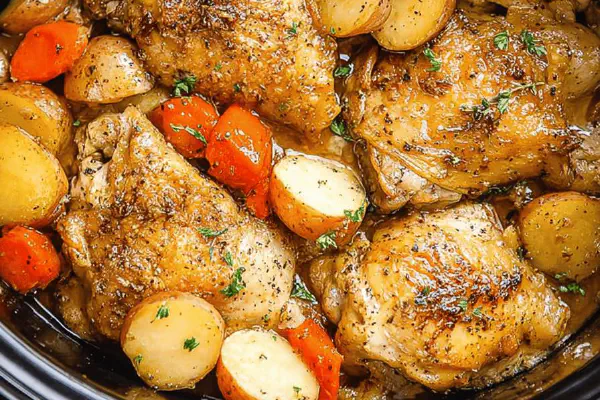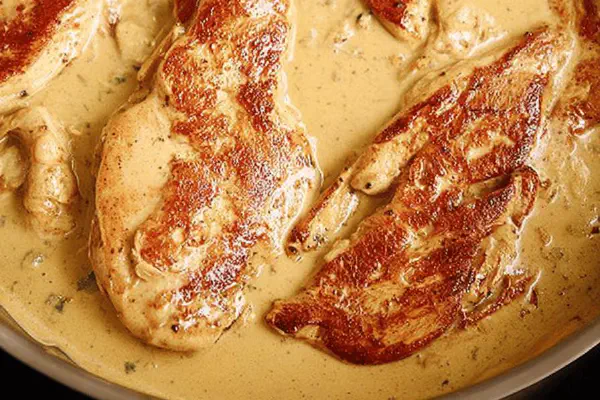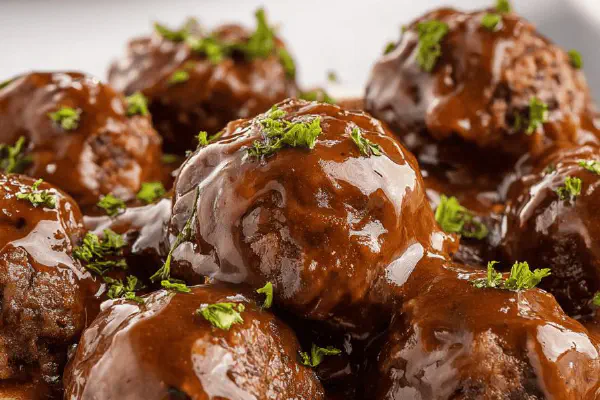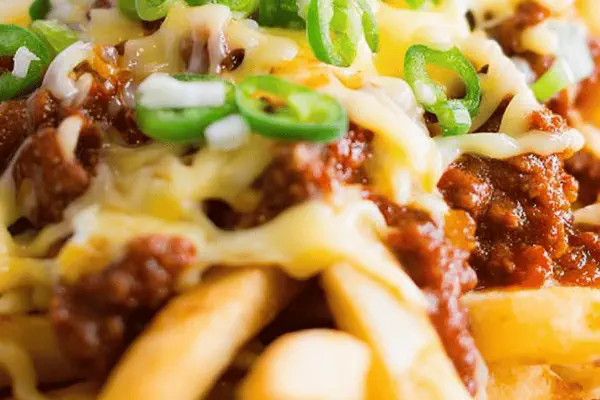Smoked Ham Steaks with Sage Cream
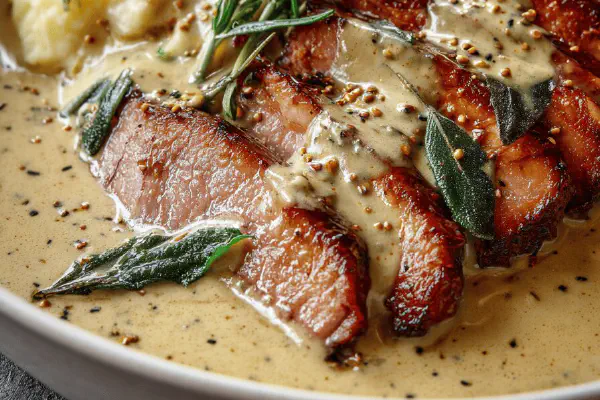
By Emma
Certified Culinary Professional
Ingredients
- 800 grams smoked ham (picnic or collar cut, 1 3/4 pounds)
- 25 ml vegetable oil (1 2 teaspoon)
- 50 grams unsalted butter (3 1 2 tablespoons)
- 12 ml mustard seeds (2 1 2 teaspoons)
- 6 ml crushed black peppercorns (1 1 4 teaspoon)
- 2 fresh sage sprigs, plus more for garnish
- 2 large garlic cloves, halved crosswise
- 75 ml dry white wine (1/3 cup)
- 140 ml beef broth (about 2/3 cup)
- 20 ml grainy mustard (1 1 3 tablespoons)
- 160 ml 15% cooking cream or heavy 35%
About the ingredients
Method
- Pat ham slices dry—1 1 4 cm thick, no soggy edges. Moisture kills sear, trust me. Slice against grain to stay tender. Use picnic or collar if toupie missing; slightly fattier but better bite.
- Heat oil in heavy skillet medium-high. When shimmer appears, toss in half ham. Sizzle should sing—2 1 2 minutes each side. Look for golden edges and a little crust. Don’t overcrowd pan or they steam not crisp. Reserve on warm plate. Pour off any residual oil into a heatproof bowl for disposal, never dump hot grease down sink; let cool first.
- Turn heat to medium, add butter. Once foaming but not brown, add mustard seeds, crushed pepper, sage sprigs, and garlic halves. Stir constantly—aroma blooms after 90 seconds, yellow butter bubbles quiet down. If butter turns brown too fast, lower heat. Avoid burnt butter—bitter ruins sauce.
- Pour wine steadily, scrape pan bottom to lift caramel bits—the real flavour nuggets. It will steam and hiss. Simmer until nearly dry, only faint liquid glistens on pan.
- Add beef broth and grainy mustard. Stir till smooth; sauce smells tangy, woody sage notes deepen. Bubble gently—reduce by about a third. Watch closely or dries too quick and thickens unevenly.
- Lower heat slightly. Stir in cream slowly, swirl pan. Sauce thickens to coat back of wooden spoon—silky, luscious. Adjust seasoning with salt if ham under-seasoned; often smoky ham is salty enough. Remove sage sticks and garlic; compost or discard.
- Return ham slices to pan. Spoon sauce over. Let warm 3-4 minutes. Don’t overheat lest cream splits and ham toughens.
- Plate ham, spoon generous sauce. Scatter fresh sage leaves bright and fragrant on top. Serve with buttery mashed potatoes or crusty country bread. Sauce is a damn bargain to soak up.
- Tip: if sauce too thin, finish with a pinch of flour or cornstarch slurry off-heat then reheat gently. Too thick? Splash more broth or cream, whisk briskly.
- Substitutions: chicken broth ok instead of beef. For dairy-free, swap butter for olive oil and use coconut cream cautiously; flavour way different but creamy texture remains.
- Storing leftovers: keep sauce and ham separate in fridge. Reheat gently to avoid drying ham and breaking sauce.
Cooking tips
Chef's notes
- 💡 Slices thick enough avoid dry chewy ham. Pat dry thoroughly before pan or edges steam, lose crisp. Oil hot but not smokey. Butter added after initial sear for flavor layering. Mustard seeds pop fast; add garlic and sage immediately else burn bitter. Watch sauce reduces with wine; scraping pan lifts caramelized bits—key flavor anchor. Cream delicate when added; stir slow, low heat prevents curdle. Sauce coats spoon back for texture cue. If sauce thin, little flour slurry off heat then gentle warm. Too thick? Add broth or cream in small bursts, whisk briskly to keep smooth.
- 💡 Don’t crowd pan frying ham slices; steam kills sear and texture. Cook batches if necessary. Reserve leftover fat in heatproof bowl; cool fully then discard properly, never drain hot grease down sink. Thickness and even sear equals juicy interior and crunchy crust contrast. Rest ham briefly after frying to redistribute juices inside. Sage fresh leaves best for garnish; substitute dried reduce quantity by half, add early with butter to bloom flavor. Garlic halves mellow roasting; minced loses subtle aroma. Swapping beef broth for chicken changes depth, milder umami but still rich. White wine dry crisp preferred, vermouth or dry sherry work backups; avoid sweet wines.
- 💡 Heat control crucial. Medium-high for searing, then medium-low for sauce steps. Butter foaming not browning signals right moment adding spices. If butter brown too soon lower heat fast. Sauce thickness timing varies with cream richness and pan surface. Watch liquid levels visually to prevent burning or uneven thickening. Remove sage sprigs and garlic before reheating ham slices to avoid bitterness. When warming ham slices back in sauce use low heat only to keep tender, avoid cream split. Sauce thickens fast near end; awareness needed, rely more on appearance and spoon texture than clock. Don’t rush reductions; better subtle flavor build than burned sharpness.
- 💡 Substitutions practical. Butter swap olive oil for dairy-free; cream for coconut cream cautiously—flavor shifts distinctly but texture stays creamy. Mustard seeds brown or classic yellow; brown nuttier texture. If missing seeds, mustard powder plus whole black mustard good combo but changes final crunch. Chicken broth gentler alternative to beef, less umami but lighter taste. Use thicker cream gives silkier sauce but heavier. 15% cream balances silkiness and lightness better for most. Oil amounts modest; too much spoils sear quality. Spice quantities easy tweak based on heat tolerance; mustard seeds and black pepper bring crunch and bite. Handle ham cuts — picnic or collar preferred over toupie for better flavor, texture.
- 💡 Leftovers store sauce and ham slices separate in fridge. Reheat gently both items; sauce can break if boiled or overheated quick. Ham toughens fast with reheating so low temp only, slow heat best. Thick sauces hold flavor well but ham texture shifts slightly firmer after time. If sauce thin after cold storage fix with little slurry warmed off heat before reheating. Slice thickness still matters reheating; thinner slices heat unevenly toughen. Plan for additional broth or cream handy if sauce dries or thickens too much when reheating. Avoid microwave blast; better stovetop gentle swirl. Compost or discard garlic halves and sage sprigs removed after cooking; bitterness risk if left in.
Common questions
How thick slice ham for frying?
Around 1 to 1.5 cm thick avoids dry crumbly edges. Thick enough so inside stays juicy not rubbery, yet sears through nicely. Slicing against grain crucial for tenderness. Too thin fries fast but loses texture. I noticed thick slices hold sauce better too.
What if mustard seeds burn?
Happens when butter too hot or spices added late. Immediate stirring and lowering heat helps. Burnt seeds turn bitter, sauce off. Swap brown mustard for classic yellow for less intense but lighter crunch. Or use Dijon if seeds not available. Toast seeds lightly before cooking for aroma.
Sauce grainy or breaking?
Cream added too hot or butter overcooked. Whisk cold cream in off heat then gently rewarm can fix grainy texture. Avoid boiling sauce post cream addition. Stir constant helps smooth finish. If breaking, try adding acid or water gradually or start butter cream step again gently.
Can chicken broth replace beef broth?
Yes but flavor lighter so less bold umami. Use chicken broth if want milder sauce, better if picky eaters. Beef broth preferred for deep savory but both good choices. Wine remains crucial to lift flavor layer scent.
How store leftovers best?
Sauce and ham slices separate fridge recommended. Reheat individually over low heat, stir sauce gently to avoid curdling. Keeping together risks dried ham and broken cream sauce. Cover well to avoid fridge dryness. Use within 3 days for best texture and flavor. Reheat slow always.
